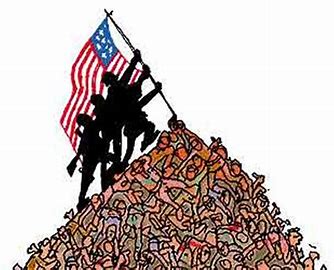1. Introduction: The Veiled Reality of Crime
This section serves as an introduction to the topic of underreported crimes in the USA. It begins by defining underreported crimes and highlighting their significance in the context of law enforcement, policymaking, and societal well-being. The introduction also emphasizes the widespread nature of underreporting, suggesting that despite efforts to improve reporting mechanisms, a significant portion of criminal activities remains hidden from official records. Finally, the introduction presents the thesis statement, outlining the main objectives of the essay, which include exploring the causes and impacts of underreported crimes and proposing strategies for addressing this issue effectively.
2. Understanding the Causes of Underreporting
This section delves into the various factors that contribute to underreporting of crimes. It covers the following aspects:
Fear of Retaliation: Fear of reprisal from perpetrators is a significant deterrent to reporting crimes. This fear is especially prevalent in cases of domestic violence and gang-related activities, where victims may face threats, intimidation, or physical harm if they seek help or cooperate with law enforcement.

Distrust in Law Enforcement: Historical injustices, systemic biases, and instances of police misconduct have eroded trust in law enforcement agencies, particularly among communities of color and marginalized populations. This lack of trust can hinder individuals from reporting crimes or seeking assistance from authorities.
Stigma and Shame: Societal attitudes and cultural norms surrounding victimization often perpetuate feelings of shame, guilt, and self-blame among survivors of crime. Victims may fear judgment or social stigma if they disclose their experiences, leading them to remain silent about their victimization.
Economic Barriers: Financial constraints pose significant barriers to reporting crimes and accessing support services for victims, particularly for low-income individuals and families. The costs associated with legal representation, medical expenses, and transportation can prevent victims from seeking help or pursuing justice.
Accessibility Issues: Marginalized and vulnerable populations face numerous barriers in accessing support services and reporting crimes, including language barriers, immigration status, and geographic isolation. Limited access to resources and culturally competent services can further impede victims’ ability to seek assistance.
Institutional Biases: Systemic biases within criminal justice institutions, such as racial profiling and victim-blaming attitudes, can discourage individuals from reporting crimes or seeking help. Victims from marginalized communities may perceive law enforcement and legal systems as hostile or unresponsive to their needs.
This section provides a comprehensive analysis of the complex factors that contribute to underreporting, shedding light on the diverse challenges faced by victims and communities in reporting crimes.

3. Unveiling the Spectrum of Underreported Crimes
This section explores the different types of crimes that are commonly underreported in the USA. It covers a wide range of criminal activities, including:
Sexual Assault and Rape: These crimes are often underreported due to fear of victim-blaming, social stigma, and distrust in the criminal justice system. Victims may also face barriers to reporting, such as lack of evidence or reluctance to relive traumatic experiences.
Domestic Violence: Victims of domestic violence may hesitate to report abuse due to fear of retaliation, economic dependence on the abuser, or social pressure to maintain the family unit. Cultural norms and societal attitudes surrounding gender roles and family dynamics can also contribute to underreporting.
Hate Crimes: Bias-motivated offenses targeting marginalized communities are often underreported due to fear of further discrimination or reprisal. Victims may also lack awareness of hate crime laws or feel discouraged by the perception that their experiences will not be taken seriously by law enforcement.
Human Trafficking: Victims of human trafficking face significant barriers to reporting, including coercion, threats, and psychological manipulation by traffickers. Additionally, victims may not recognize themselves as being trafficked or fear law enforcement involvement due to immigration status or distrust in authorities.

White-Collar Crimes: Economic crimes such as fraud, embezzlement, and corporate misconduct are frequently underreported due to factors such as embarrassment, fear of damaging reputations or financial losses, and complexities involved in proving such crimes.
Child Abuse and Neglect: Children may be unable to report abuse or neglect due to fear of repercussions from caregivers, lack of understanding of their rights, or feelings of shame or guilt. Institutional failures within child welfare systems can also contribute to underreporting and inadequate protection of children.
Cybercrimes: Crimes committed through digital means, such as hacking, online harassment, and identity theft, are often underreported due to factors like anonymity, difficulty in tracing perpetrators, and lack of awareness about reporting mechanisms.
Elder Abuse: Older adults may face barriers to reporting abuse, including cognitive decline, social isolation, and dependence on caregivers. Shame, fear of retaliation, and societal attitudes towards aging and dependency can also contribute to underreporting.
This section provides a comprehensive overview of the diverse range of underreported crimes, highlighting the unique challenges and barriers faced by victims in each category.
4. Impacts of Underreported Crimes
This section examines the profound impacts of underreported crimes at both the individual and community levels:

Individual-level impacts:
Victims of underreported crimes often experience significant physical, emotional, and psychological trauma. They may suffer from ongoing fear, anxiety, and depression, as well as physical injuries or health problems resulting from the crime. Moreover, the lack of recognition or validation of their experiences can exacerbate feelings of isolation and helplessness. Additionally, underreported crimes can hinder victims’ access to justice and support services, preventing them from receiving the necessary medical care, counseling, or legal assistance to recover from their trauma. This can have long-term consequences on victims’ well-being, affecting their ability to trust others, form healthy relationships, and lead fulfilling lives.
Community-level impacts:
Underreported crimes can also have broader societal repercussions, undermining trust, social cohesion, and public safety within communities. When crimes go unreported or unresolved, perpetrators may continue to victimize others with impunity, perpetuating cycles of violence and exploitation. Moreover, the erosion of trust in law enforcement and the justice system can hinder community-police relations, making it more difficult for authorities to effectively address crime and maintain public order. Additionally, underreported crimes can impose economic costs on communities, including expenses related to healthcare, social services, and lost productivity. Furthermore, the failure to address underreported crimes can contribute to a sense of fear and insecurity among community members, diminishing their quality of life and overall well-being.
This section highlights the far-reaching consequences of underreported crimes, emphasizing the importance of addressing this issue to promote healing, accountability, and social cohesion within communities.
5. Challenges and Solutions
This section identifies the various challenges in addressing underreported crimes and proposes strategies for overcoming these obstacles:

Methodological challenges in data collection:
Current crime reporting mechanisms often fail to capture the true extent of underreported crimes, leading to gaps in data and underestimations of the problem. To address this issue, improvements are needed in data collection methodologies, including enhanced training for law enforcement personnel, standardized protocols for victim interviews, and increased collaboration between agencies to share information and resources.
Enhancing victim support services:
To better meet the needs of underserved populations, increased funding and resources are needed for victim advocacy organizations, crisis hotlines, and trauma-informed care. Additionally, efforts should be made to expand access to culturally competent services and outreach initiatives, ensuring that all victims have access to the support and assistance they need to heal and recover from their experiences.
Strengthening community partnerships:
Collaboration between law enforcement agencies, community-based organizations, and social service providers is essential to building trust, facilitating reporting, and enhancing victim support networks. Community policing initiatives, outreach programs, and cultural competency training can help bridge the gap between law enforcement and marginalized communities, fostering greater cooperation and mutual understanding.
Empowering marginalized voices:
Initiatives that amplify the voices of marginalized and vulnerable populations are crucial in shaping policies and practices that address underreported crimes. This includes providing opportunities for survivors of violence, immigrants, LGBTQ+ individuals, and people of color to participate in decision-making processes and advocate for their rights. By centering the experiences and perspectives of those most affected by underreported crimes, policymakers can develop more inclusive and effective solutions to address this issue.
This section outlines practical steps for addressing underreported crimes, emphasizing the importance of collaboration, community engagement, and victim-centered approaches in creating a more just and inclusive response to crime in the USA.
6. Conclusion: Toward a More Just and Inclusive Response

The conclusion summarizes the key insights and findings presented in the essay, reaffirming the importance of understanding and addressing underreported crimes in the USA. It calls for action from policymakers, law enforcement agencies, and community stakeholders to prioritize efforts to improve reporting mechanisms, enhance victim support services, and strengthen community partnerships. By working together to address the root causes of underreporting and provide meaningful support to victims, society can move towards a more just and inclusive response to crime that promotes healing, accountability, and social justice for all.



